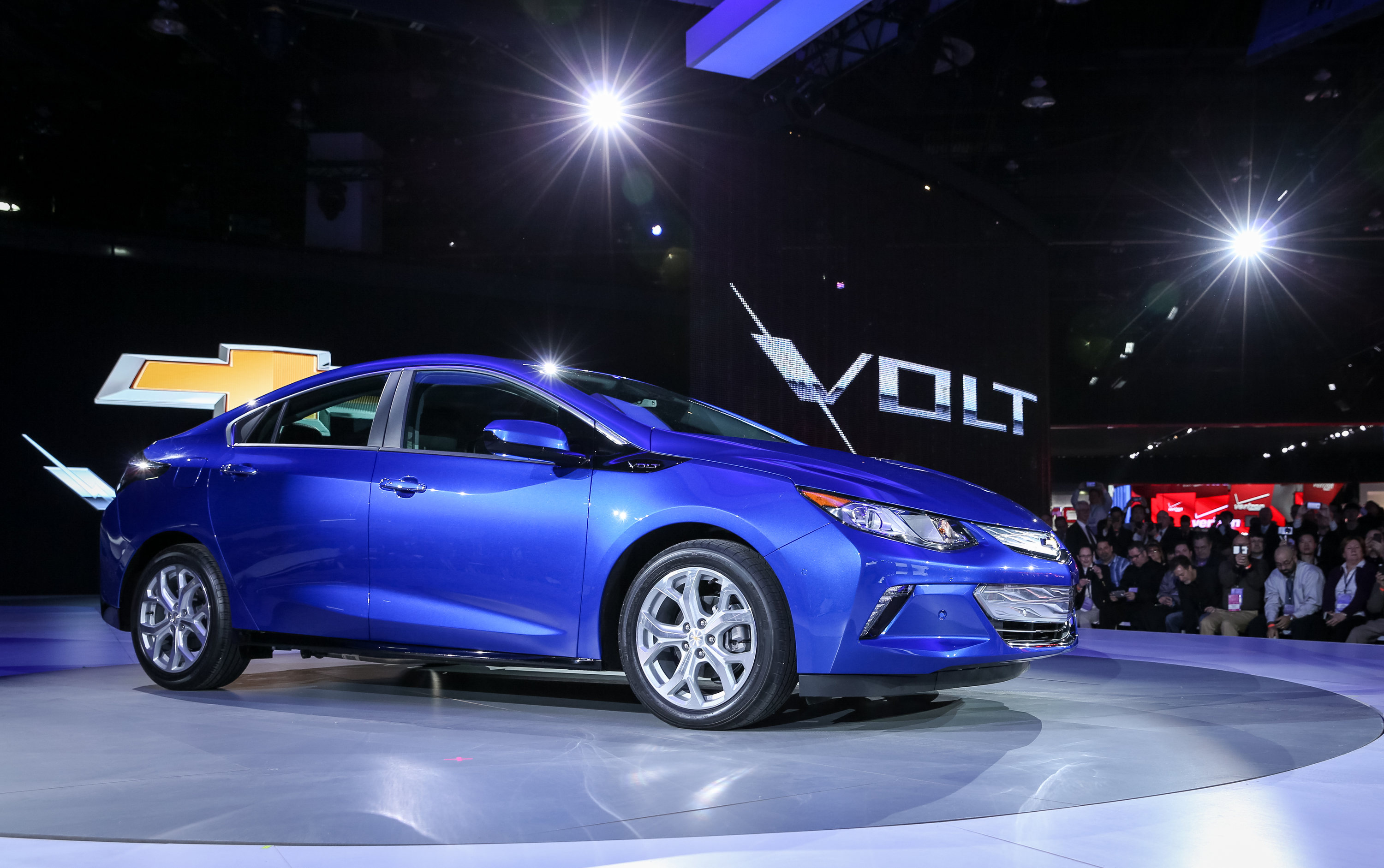

"The improvements in the efficiency and performance of the 2016 Volt are driven by what owners said they wanted in the next-generation model: more range, better fuel economy and stronger acceleration," explains Andrew Farah, vehicle chief engineer. On the braking side, the new Volt gets the paddle-shift Regen on Demand feature that GM introduced on the Volt-based Cadillac ELR. The car can hit 30 mph in 2.6 seconds and 60 mph in 8.4 seconds. A more powerful discharge rate of 120 kW (vs 110 kW) adds to the Volt's performance. The new battery and motor layout pushes the 2016 Volt up to 50 miles (80 km) on electric power alone, 12 miles (19 km) farther than the current Volt's battery. The new Voltec powertrain combines an 18.4-kWh battery, two-motor drive unit and 1.5-liter range extender (Photo: General Motors) The motors can power the front wheels individually or in tandem a single primary motor drives the car at lower speeds in the city, while the two motors split power duties at moderate speeds or engage completely for higher-load/higher-speed driving. The two drive motors combine to deliver the same 149 hp (111 kW) as the current Volt and increase available torque up to 294 lb-ft (from 273 lb-ft). A revised configuration seats the cells lower in the T-shaped pack for a lower center of gravity in the vehicle. While it's more powerful, the battery shrinks in number of cells, from 288 cells to 192, thanks to higher energy capacity. The electric side of the revamped Voltec powertain includes a new two-motor drive unit and an 18.4-kWh lithium-ion battery. In designing the 2016 Volt, GM relied heavily on feedback from first-generation Volt owners, developing a sportier, higher performance plug-in with an all-electric range boost of more than 30 percent. Not only did it reveal the all-electric Bolt concept car, it rolled the second-generation Volt out under the lights. GM is using the 2015 North American International Auto Show to reaffirm its commitment to electric power.


 0 kommentar(er)
0 kommentar(er)
